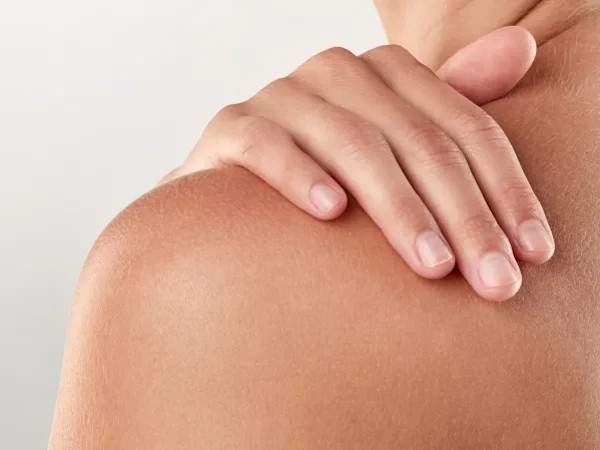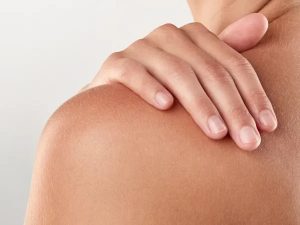“Love the skin you’re in! Strive to have healthy looking skin, NOT perfect looking skin.” – Stephanie Lahart
Contents
What is natural skincare?
It’s about sustainable, non-toxic ways to look after the outside of your body – moisturisers, lip balms, creams, lotions, gels, conditioners etc. Every culture has traditionally had its own fats / oils / waxes to protect the skin from the elements. In Mediterranean lands it was olive oil; the native Americans used jojoba; the Inuit, whale and seal blubber; and in northern Europe, animal fats. These were, of course, very raw materials indeed. Nowadays, understandably, people prefer products that feel, smell and look a bit nicer.
The ‘natural’ part is difficult to define – as soon as the multinationals start using the word, it’s time to get very sceptical. And crude oil is perfectly natural (and organic) – so the ‘natural’ tab could be applied to petroleum products. So what we really mean is as eco- and human-friendly as possible. Low-impact, in other words.

The skin is the body’s largest organ. We eliminate toxins through it, and it allows vitamins in (e.g. vitamin D from sunlight). So you have to be careful that what you put on it doesn’t stop those processes.
Natural products provide an alternative to mainstream commercial ones. Their ingredients are usually plant-based – for example essential oils, detergents from coconuts, veg oils for creams and flower waters for gels. Mineral ingredients are also used – for example clays for face masks and cleansers.

But ‘natural’ products sometimes use artificial preservatives. Some, like preservative K, are approved by the Soil Association (although some people can have an allergic reaction to it). Without preservatives, products must be treated as fresh foods, and used within 3 days, or they will spoil. If preservative is used at 0.5%, the product will have a shelf-life of 2 years. Then you can have long-lasting products containing all the ingredients you do want on your skin.
The best moisturiser is water, and the best way to obtain it is to drink it. Then it escapes through the pores in the skin and evaporates. Good natural moisturisers slow down this evaporation without blocking the pores, and at the same time add beneficial ingredients to the skin – nutrients, and active ingredients like omega-3 (essential fatty acid that the body can’t manufacture itself).

What are the benefits of natural skincare?
The benefits of natural skincare products can best be illustrated by comparison with mainstream / commercial products. The way that Mike Harmon, who we interviewed for this intro, describes mainstream commercial products is that ‘they promise the earth, but really, they cost the earth’. Yes, it’s corny, but you get the idea. They’re more expensive than natural products, and worse for the environment and your health.
Some moisturisers hydrate the skin by attracting moisture from other parts of the body or from the environment. Petroleum jellies and other mineral oil products just form a barrier to prevent moisture from escaping. Initially, skin plumps up, because water is trying to get out; but in the long term, petrochemicals dry the skin and cause it to crack. Also, if moisture can’t escape, neither can toxins, so petrochemicals put your skin – the largest eliminative organ of your body – out of action, putting stress on kidneys, liver and bowels. Toxins also end up in joints, causing mobility problems.

Other not-so-good ingredients in commercial products include: liquid paraffin (makes skin look like it’s moisturised, and it’s cheap), petrol (a strong solvent that’s added to dissolve not-very-soluble ingredients), glycerine (can dry the skin when overused), and alcohol (another solvent, very cheap, dries the skin). And yet these products can be very expensive indeed. The public have begun to work it out though, and natural skincare products comprise one of the fastest-growing market sectors in the world. They don’t cause the problems that mainstream products cause, plus they have positive benefits of their own.

There’s more chance of an allergic reaction or irritation from a synthetic or petroleum-based product than a natural one. A lot of the ingredients in natural skincare products are used in the food industry. For example, emulsifiers used in creams and lotions are used in the Danish food industry to make ice-cream. 15 years ago, ‘natural’ products weren’t so effective as they are today – we didn’t have the knowledge we do now. They didn’t feel very good on the skin, but you felt ‘worthy’ using them. Now natural products are much better than their commercial equivalent.
If you buy natural skincare products, you support small companies with a green ethos, and if you make your own, you can make sure that the ingredients are local and organic. In both cases, the ingredients themselves are (all or mostly) non-synthetic, biodegradable, and kinder to your body and the environment.
How to make a simple lip balm with 3 natural ingredients.
What can I do?
If you make your own, you can control what goes into them, and you can tailor them to your specific needs. No previous experience is needed, but we suggest that you attend a course – for a couple of reasons. Firstly, you can ask specific questions about the kind of products / ingredients for your particular requirements. Secondly, to make sure you’re not doing something potentially harmful – just because ingredients are natural, doesn’t mean that they can’t cause problems. Some plants are toxic, and some can cause harm in some circumstances. Jasmine, for example, is an abortifacient, so shouldn’t be included in products for pregnant women.

Making creams is a two-part process – one part is heating waters, the other part is heating oils, after which they are brought together like making mayonnaise or custard. Gels are even easier. You can make and sell products from your kitchen – you don’t need special premises. There is legislation you need to comply with if you want to retail your product – see the Department of Trade and Industry cosmetic regulations – it may seem daunting but is easily achieved. Legislation will be covered on a good course.

Most of the raw materials are easily available anywhere – sunflower oil, olive oil, sweet almond oil. The less common ingredients are available online. You don’t have to put essential oils in – they are the icing on the cake. But if you do, you can buy them or make your own. You have all the equipment you need in your kitchen – saucepans, whisk, thermometer, stainless steel bowls, measuring jugs, spatulas (and the cooker) – you don’t need any specialist equipment at all.

As for the cost benefits of making your own – what’s the value of your health? But if you want to talk financial cost, the cream you make yourself usually costs less than the jar it’s in. Compare this to the astronomical cost of some of the high-end commercial creams and you can see the cost benefit very easily.
Specialist(s)
Thanks to Mike Harmon for information.
The specialist(s) below will respond to queries on this topic. Please comment in the box at the bottom of the page.

Sonia Sinanan trained in holistic aromatherapy with the Tisserand school and has been practising for 15 years. She specialises in using nutritional and essential oils derived from plants for skincare and has her own range of natural skincare products at Earth:li Natural Skincare.



2 Comments
Hi – I’m definitely keen to move away from petrochemicals for the earth’s sake, but I don’t know that a lot of this information is dermatologically true. Natural products are no less likely to cause reactions, especially is home made and not sufficiently tested and reviewed or involve essential oils. Glycerine is drying depending on the climate, or the use of water. Paraffin and petroleum don’t ‘block pores’ (and I say this as someone for whom they don’t work). Comodegenity is quite personal and varies from person to person.
Bean – sorry, just seen this. Agreed – petroleum jelly has been rated non-comedogenic. I’ve changed that section of the intro. But it just stops moisture escaping, rather than hydrating (so as I understand it, it’s an occlusive rather than a humectant agent). I don’t know enough about the skin to know how it does that without blocking pores (we’re getting a specialist advisor for this topic soon). If moisture can’t escape, then toxins can’t escape either, and elimination of toxins is an important function of the skin. And you’re right, we need to move away from the petrochemical industry in all its applications.